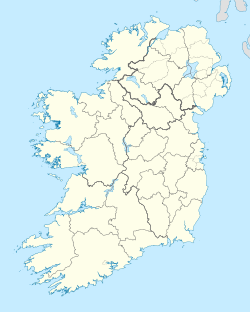 | |||||||
| General information | |||||||
| Location | Moira, County Down. (Station in County Antrim) Northern Ireland | ||||||
| Coordinates | 54°29′31″N6°12′54″W / 54.492°N 6.215°W | ||||||
| System | Park and Ride Commuter rail | ||||||
| Owned by | NI Railways | ||||||
| Operated by | NI Railways | ||||||
| Line | Portadown/Newry | ||||||
| Platforms | 2 | ||||||
| Tracks | 2 | ||||||
| Construction | |||||||
| Structure type | At-grade | ||||||
| Other information | |||||||
| Station code | MOIRA [1] | ||||||
| Fare zone | iLink Zone 3 | ||||||
| Passengers | |||||||
| 2022/23 | 254,953 [2] | ||||||
| 2023/24 | |||||||
| |||||||


Moira railway station serves Moira in County Down, Northern Ireland. Despite the station serving the County Down town, the station itself is located in County Antrim, the neighbouring Lagan Canal being the boundary. Moira station is the oldest building on the NI Railways network today having been opened on 18 November 1841. [4] The old, now redundant, signal box stands over the station on the Southbound side.
Contents
- Station Buildings
- Lines in the Past
- Lines in the Present
- Service
- Future Link to Armagh City
- References
Situated near the M1 motorway, the station is popular amongst commuters from the surrounding area, with over 330,000 passengers boarding or alighting at the station in the 2023/24 financial year. [3]
In March 2014, NIR started construction of a new footbridge at the Portadown end of the station. The footbridge was completed in August 2014.




